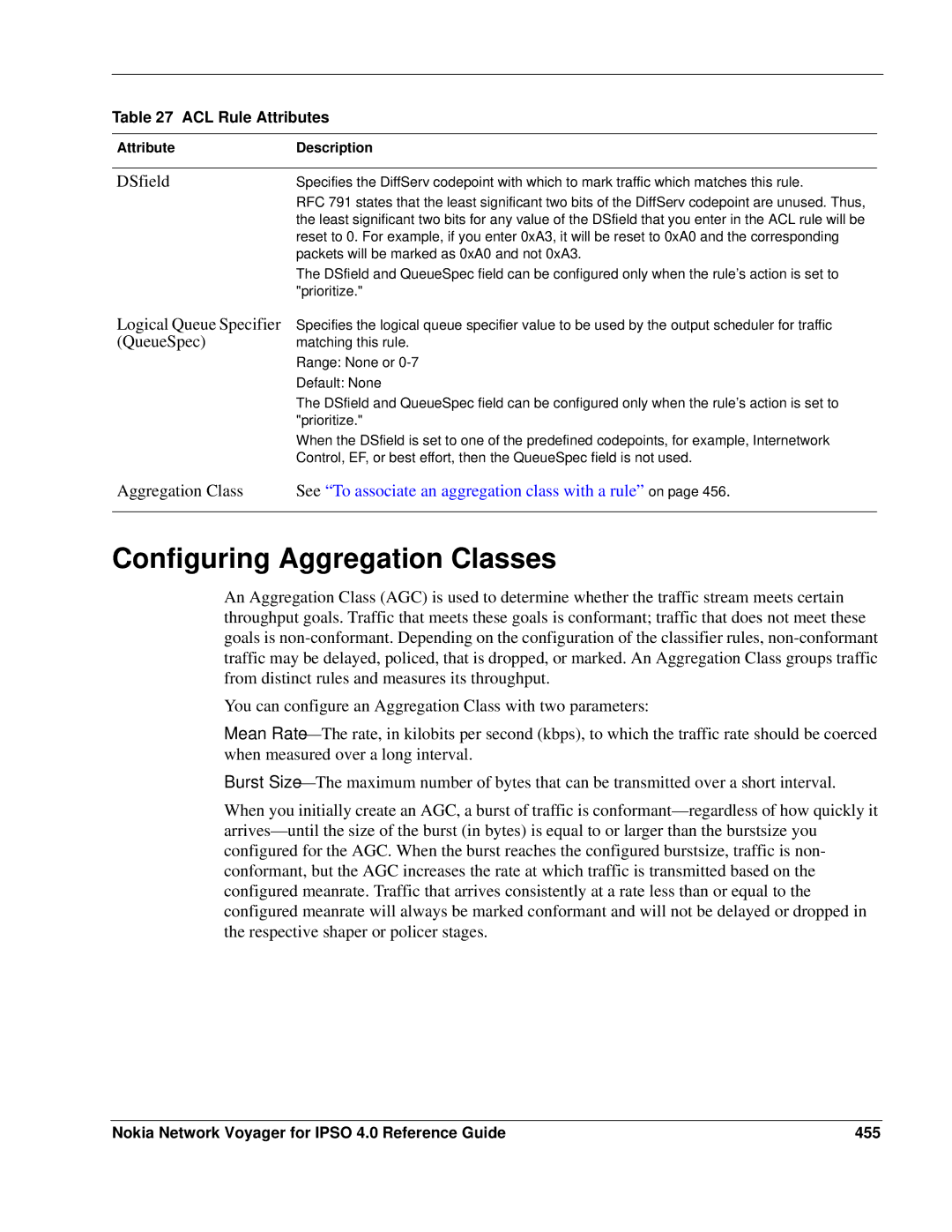
Table 27 ACL Rule Attributes
Attribute | Description |
|
|
DSfield | Specifies the DiffServ codepoint with which to mark traffic which matches this rule. |
| RFC 791 states that the least significant two bits of the DiffServ codepoint are unused. Thus, |
| the least significant two bits for any value of the DSfield that you enter in the ACL rule will be |
| reset to 0. For example, if you enter 0xA3, it will be reset to 0xA0 and the corresponding |
| packets will be marked as 0xA0 and not 0xA3. |
| The DSfield and QueueSpec field can be configured only when the rule’s action is set to |
| "prioritize." |
Logical Queue Specifier Specifies the logical queue specifier value to be used by the output scheduler for traffic
(QueueSpec) | matching this rule. |
| Range: None or |
| Default: None |
| The DSfield and QueueSpec field can be configured only when the rule’s action is set to |
| "prioritize." |
| When the DSfield is set to one of the predefined codepoints, for example, Internetwork |
| Control, EF, or best effort, then the QueueSpec field is not used. |
Aggregation Class | See “To associate an aggregation class with a rule” on page 456. |
|
|
Configuring Aggregation Classes
An Aggregation Class (AGC) is used to determine whether the traffic stream meets certain throughput goals. Traffic that meets these goals is conformant; traffic that does not meet these goals is
You can configure an Aggregation Class with two parameters:
Mean
Burst
When you initially create an AGC, a burst of traffic is
Nokia Network Voyager for IPSO 4.0 Reference Guide | 455 |
